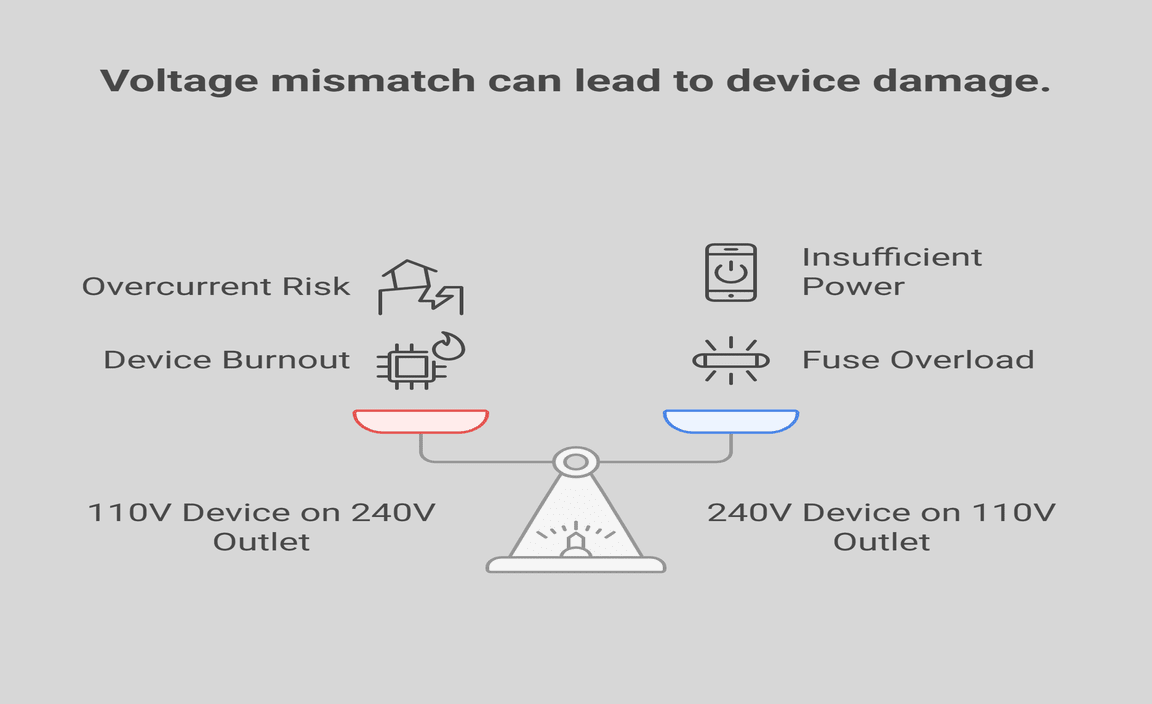Quick Summary:
Yes, you can find cheap lead acid car batteries with a warranty! Look for reputable brands at auto parts stores or online and always check the warranty details. This ensures you get a budget-friendly battery that’s still reliable and protected.
Cheap Lead Acid Car Battery With Warranty: Essential Savings
Ever stared at a dead car battery and felt a wave of dread? It happens to the best of us! A dead battery can leave you stranded, missing appointments, and feeling helpless. The good news is, replacing a car battery doesn’t have to break the bank. You can often find affordable lead acid car batteries that still come with a solid warranty, giving you peace of mind without the high price tag. We’re here to guide you through finding these essential savings, making battery replacement simple and stress-free. Get ready to learn how to keep your car running smoothly on a sensible budget!
Understanding Lead Acid Car Batteries: The Basics
Lead acid batteries have been the powerhouse of vehicles for over a century, and for good reason. They’re reliable, powerful enough for most car needs, and relatively inexpensive to produce. This makes them a great option when you’re looking for a budget-friendly replacement.
These batteries work through a chemical reaction. Inside, lead plates are submerged in a sulfuric acid solution. When your car needs power, this solution causes a reaction with the lead plates, generating electricity. When your car is running, the alternator recharges the battery, completing the cycle.
While more advanced battery types exist, like lithium-ion, lead acid batteries remain the go-to for most standard vehicles. They offer a great balance of cost, performance, and availability, making them a smart choice for budget-conscious drivers.
Why Choose a Lead Acid Battery?
When it comes to powering your vehicle, you have a few options. However, for many drivers, especially those on a budget, the lead acid car battery still reigns supreme. Here’s why:
- Cost-Effective: This is the big one! Lead acid batteries are significantly cheaper to manufacture than other types, which translates into lower prices for consumers. This makes them an excellent choice for those needing to replace their battery without spending a fortune.
- Proven Reliability: They’ve been around for ages, meaning their technology is well-understood and consistently reliable for starting engines and powering vehicle electronics.
- Wide Availability: You can find lead acid car batteries almost anywhere – at auto parts stores, big box retailers, and even online. This makes them easy to source when you need a replacement quickly.
- Decent Lifespan: With proper care and driving habits, a lead acid battery can last anywhere from 3 to 5 years, which is a respectable lifespan for the investment.
- Ease of Recycling: Lead acid batteries are one of the most recycled consumer products. Most places that sell them will take your old one back for proper disposal, often offering a small credit.
What “Cheap” Really Means for Car Batteries
The term “cheap car battery” can sometimes make people nervous. Does it mean it will die quickly? Will it leave you stranded? When we talk about a “cheap lead acid car battery with warranty,” we’re not talking about a poorly made product. Instead, we’re looking for batteries that offer excellent value for money.
This typically means finding a battery from a reputable brand that has a straightforward design and doesn’t come with all the bells and whistles of premium models. You might save money by opting for a battery with a shorter warranty period (though still a warranty nonetheless!) or one that’s designed for standard driving conditions rather than extreme temperatures or heavy accessory use.
The key is to balance cost with quality. A truly cheap battery might be a false economy if it fails prematurely. The goal is to find a battery that’s affordable and backed by a guarantee, ensuring your investment is protected.
The Importance of a Warranty
Even the most affordable car batteries are an investment. That’s where a warranty becomes incredibly important. A warranty acts as your safety net, protecting you against manufacturing defects or premature failure.
When you buy a “cheap lead acid car battery with warranty,” you’re getting peace of mind. If the battery fails within the warranty period due to a fault (and not due to neglect or improper installation), the manufacturer or retailer will typically replace it. This can save you significant expense and hassle down the line.
Warranties can vary. Some might cover a certain number of months with full replacement, while others might prorate the cost after a certain period. Always read the warranty terms carefully before making a purchase. A good warranty, even on a budget battery, is a sign of a manufacturer’s confidence in their product.
Where to Find Cheap Lead Acid Car Batteries with Warranty
Finding these value-packed batteries is easier than you might think. Several types of retailers offer competitive pricing and good warranty options:
Auto Parts Stores
Local and national auto parts chains are a prime spot. They often carry a range of brands, from premium to budget-friendly. Many of these stores will have their own house brands that offer a good balance of price and warranty coverage. Plus, their staff can often help you find the right battery for your specific vehicle.
Big Box Retailers
Stores like Walmart, Costco, or Sam’s Club often have automotive sections that include car batteries. They usually carry well-known brands and sometimes have exclusive deals. Their prices can be very competitive, and they generally offer standard warranties.
Online Retailers
Websites like Amazon, eBay, and specialized online auto parts stores can be treasure troves for budget batteries. You can compare prices easily and read customer reviews. However, be sure to check the warranty details and return policy carefully, as shipping a heavy battery can sometimes be complicated.
Direct from Manufacturers
Some battery manufacturers sell directly online or through authorized dealers. While this isn’t always the cheapest option, it can provide direct access to their product lines and warranty information.
Key Factors to Consider When Buying
When you’re on the hunt for a cheap lead acid car battery with warranty, keep these important factors in mind:
- Battery Size and Type (Group Size): Your car requires a specific battery group size. This ensures it fits physically in the battery tray and has the correct terminal placement. You can find this information in your car’s owner’s manual or by searching online for your vehicle’s make and model.
- Cold Cranking Amps (CCA): This rating indicates how much power the battery can deliver in cold weather to start your engine. Check your owner’s manual for the minimum CCA recommended for your vehicle. For colder climates, aim for a higher CCA rating.
- Reserve Capacity (RC): This tells you how long the battery can power essential accessories if your alternator fails. While less critical than CCA for starting, it’s still a useful indicator of overall battery strength.
- Warranty Length and Type: This is crucial! Look for a battery with a decent warranty period (e.g., 1-3 years free replacement is common for budget options). Understand if it’s a full replacement warranty or a prorated one.
- Brand Reputation: Even on a budget, sticking with known brands often means better quality control and more reliable warranty service.
- Date of Manufacture: Batteries have a shelf life. Look for a battery that was manufactured recently. Manufacturers often stamp a date code on the battery (e.g., A for January, B for February, with a number for the year).
DIY Battery Replacement: A Step-by-Step Guide
Replacing a car battery yourself can save you money on labor costs. It’s a straightforward process for most vehicles, but safety is paramount. Always follow these steps carefully.
Safety First!
Car batteries contain corrosive acid and can produce flammable hydrogen gas. Always wear:
- Safety glasses or goggles
- Gloves
- Old clothing
Work in a well-ventilated area, away from sparks or open flames. Keep metal tools away from the battery terminals to avoid short circuits.
Tools You’ll Need
- Wrench or socket set (common sizes are 10mm, 12mm, 13mm)
- Battery terminal cleaner or wire brush
- Rag or paper towels
- Anti-corrosion spray or petroleum jelly (optional)
- New battery
The Replacement Process
- Turn Off the Engine and Remove the Key: Ensure the car is completely off and the key is out of the ignition.
- Locate the Battery: It’s usually under the hood, often near the front or side of the engine compartment. Some cars have it in the trunk or under a seat. Check your owner’s manual if you can’t find it.
- Identify Terminal Connections: You’ll see two terminals: a positive (+) and a negative (-). The positive terminal is usually marked with a red cover or a plus sign.
- Disconnect the Negative Terminal First: Using your wrench, loosen the nut on the negative (-) terminal clamp. Carefully twist and pull the cable off the terminal. Move it aside so it can’t accidentally touch the battery. This is the most critical safety step.
- Disconnect the Positive Terminal: Now, loosen the nut on the positive (+) terminal clamp. Twist and pull the cable off the terminal.
- Remove the Battery Hold-Down: Most batteries are secured by a bracket or clamp at the base. Loosen and remove the bolts or nuts holding it in place.
- Remove the Old Battery: With the hold-down removed, carefully lift the battery straight up and out of the tray. Batteries are heavy, so lift with your legs!
- Clean the Battery Tray and Terminals: Use a wire brush or terminal cleaner to remove any corrosion from the battery tray and the cable clamps. A clean connection ensures good power flow. You can also use a damp rag to wipe down the tray.
- Install the New Battery: Carefully lower the new battery into the tray, making sure it’s oriented correctly (positive and negative terminals in the right position).
- Secure the New Battery: Reinstall and tighten the battery hold-down bracket to keep the battery from moving.
- Connect the Positive Terminal First: Place the positive (+) cable clamp onto the positive terminal and tighten the nut securely.
- Connect the Negative Terminal Last: Place the negative (-) cable clamp onto the negative terminal and tighten the nut. Again, this is a key safety step to prevent sparks.
- Apply Anti-Corrosion (Optional): You can spray a small amount of anti-corrosion protectant or apply a thin layer of petroleum jelly to the terminals to help prevent future corrosion.
- Start the Car: Close the hood, start your car, and check if everything is working normally. The engine should start up smoothly.
If your car has a modern infotainment system or alarm, you might need to reset them after changing the battery. Your owner’s manual will have instructions on how to do this.
Lead Acid Battery Warranties: What to Expect
When you’re looking for a cheap lead acid car battery with warranty, understanding the terms is key. Warranties aren’t all created equal, and knowing the differences will help you make an informed choice.
Types of Warranties
- Full Replacement Warranty: This is the best type. Within the specified period (e.g., 12, 18, 24 months), if the battery fails due to a defect, it will be replaced with a brand-new one for free.
- Prated Warranty: This is common for budget batteries. It offers a certain period of full replacement, followed by a period where you get a discount on a new battery based on how long the old one lasted. For example, a 2-year full replacement followed by 1 year prorated might mean you pay 1/3 of the cost for a new battery in the third year.
Warranty Durations
For “cheap” or budget-friendly lead acid batteries, expect warranty periods to range from:
- 6-12 months: Very basic coverage, often found on the absolute cheapest options.
- 1-2 years: More common for value-oriented batteries and house brands.
- 2-3 years: Good coverage for a mid-range budget battery.
Premium batteries can offer 3-5 years or more, but you’re paying a higher upfront cost for those.
What’s Typically NOT Covered
It’s important to know that most warranties won’t cover:
- Damage from improper installation or use (e.g., overcharging from a faulty alternator).
- Damage from physical impact or freezing.
- Batteries used in commercial applications or vehicles not designed for them.
- Normal wear and tear or failure due to age.
- Failure to maintain the battery (e.g., letting it discharge completely for extended periods).
Always keep your receipt! You’ll need it to make a warranty claim.
Comparing Pros and Cons of Budget Batteries with Warranties
Like any purchase, there are advantages and disadvantages to opting for a more budget-friendly car battery, even with a warranty.
Pros:
- Lower Upfront Cost: The most obvious benefit is saving money immediately, which is crucial for many drivers.
- Peace of Mind (with Warranty): The warranty protects against premature failure, giving you confidence that your investment is somewhat safeguarded.
- Adequate Performance for Average Needs: For daily driving under typical conditions, a good quality budget battery is usually sufficient.
- Accessibility: These batteries are widely available, making them easy to find and purchase.
Cons:
- Potentially Shorter Lifespan: While a warranty helps, budget batteries might not last as long as premium options, meaning you might replace them more frequently over the long term.
- Lower Performance Ratings: They might have lower CCA or RC ratings, which could be an issue in very extreme climates or for vehicles with high power demands.
- Less Advanced Features: Budget batteries typically lack features found in premium batteries, such as enhanced vibration resistance or specific designs for start-stop systems.
- Warranty Nuances: You need to be diligent in understanding the warranty terms, as prorated options require more calculations if a claim is made later in the period.
When to Consider a Premium Battery Instead
While a cheap lead acid car battery with warranty is a smart choice for many, there are situations where investing a bit more in a premium battery makes sense:
- Extreme Climates: If you live in an area with consistently very hot or very cold weather, a battery designed for those conditions might be more reliable and last longer.
- Heavy Accessory Use: Do you often use charging ports for devices, run a powerful stereo system, or have other electronics that draw significant power when the engine isn’t running? A higher-capacity battery might be better.
- Start-Stop Vehicles: Modern cars with start-stop technology put a lot of strain on batteries. They require specialized batteries (often AGM – Absorbed Glass Mat) that are designed for frequent deep discharges and recharging. Lead acid batteries are generally not suitable for these.
- Long Commutes or Demanding Driving: Intense driving schedules or vehicles that sit idle for long periods but then require immediate, robust power might benefit from a more robust battery.
- Desire for Maximum Longevity: If you prefer to “set it and forget it” for as long as possible and want the absolute longest lifespan, a premium battery is usually the way to go.
For most standard vehicles and average drivers, however, a well-chosen budget battery with a warranty offers ample performance and value.
Maintaining Your New Battery for Longevity
Once you’ve installed your new, affordable battery, a little care can go a long way in making it last as long as possible, even beyond its warranty period.
Regular Cleaning
Keep the battery terminals clean. Corrosion (a white or bluish powdery buildup) can form, hindering the flow of electricity. Check them every few months and clean them with a wire brush or battery terminal cleaner if needed. A spray of approved anti-corrosion protectant or a thin coat of petroleum jelly can help prevent it.
Check Connections
Ensure the battery cables are tight. Loose connections can cause starting problems and drain the battery. Give them a gentle wiggle to ensure they are secure.
Avoid Deep Discharges
Try not to leave lights, radio, or other accessories on with the engine off for extended periods, as this can deeply discharge the battery. Deep discharges significantly shorten the life of a lead acid battery.
Regular Driving
Your car’s alternator recharges the battery as you drive. If the car sits for long periods without being driven, the battery can lose its charge. If possible, aim to drive your car for at least 20-30 minutes every week or two to keep it topped up.
Check the Alternator
Your alternator is responsible for recharging the battery. If it’s not working correctly, it can overcharge or undercharge





